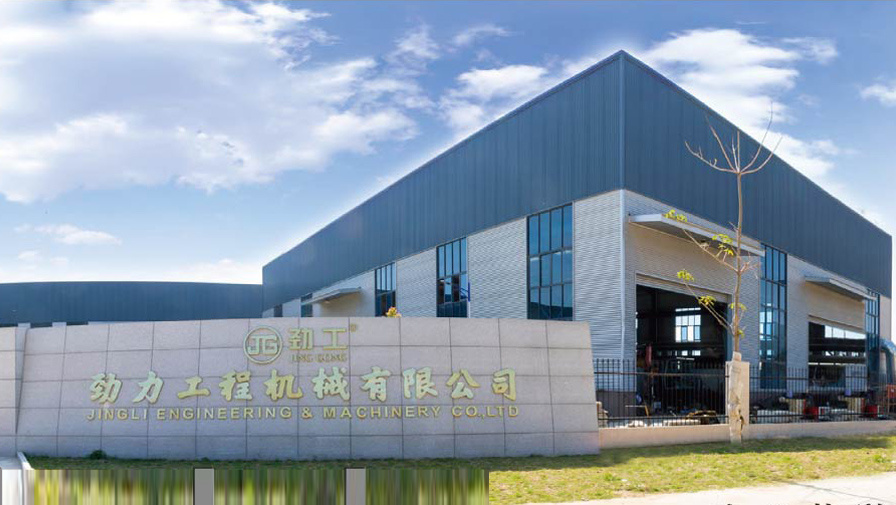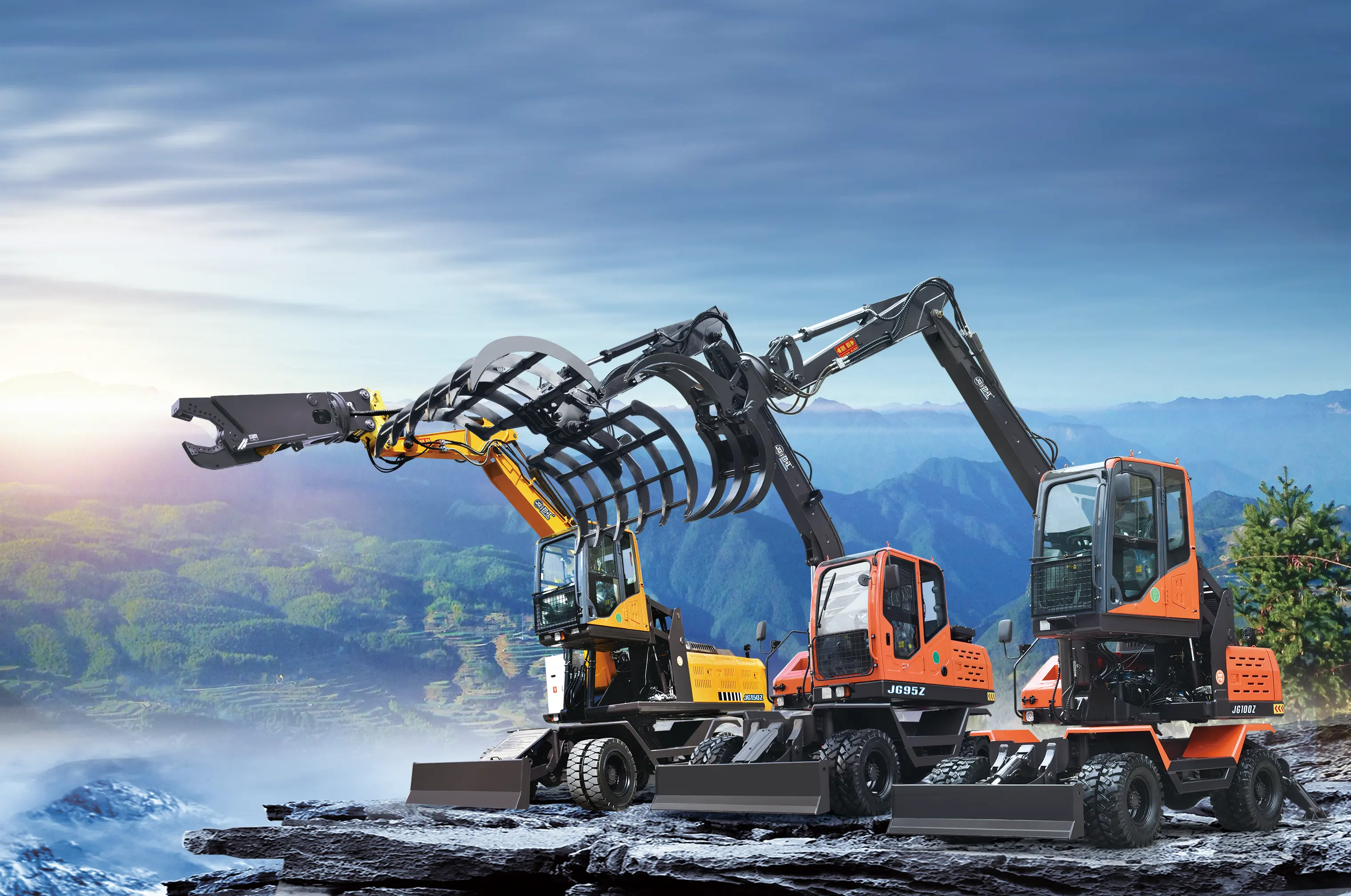-
About UsQuanzhou Jinli Engineering Machinery Co., Ltd., established in July 2006, is a professional manufacturer specializing in design, development, production, and sales of equipment machinery.

-
ProductsConstruction machinery: tire excavator, crawler excavator; Forestry machinery: bamboo and wood (sugarcane) picking and loading machines, multifunctional transfer machines; Harvesting machinery: whole rod sugarcane combine har

-
NewsJinggong adheres to the business philosophy of "technology supporting enterprises, quality bearing heavy trust", constantly develops new products guided by market demand, and presents satisfactory products to our customers.

-
ServiceSince its establishment, we have always adhered to the service philosophy of "being close, caring, full lifecycle, and full value chain".

-
Contact UsCorporate Honors We provide our customers not only with advantageous products, technologies, and services, but also with a comprehensive solution to meet diverse needs, thereby continuously creating value for customers and he


Online Inquiry
JINGONG
NEWS
Understanding Hydraulic Crawler Excavators: Insights from the Manufacturing Process
TIME:2025-08-02 10:00
Hydraulic crawler excavators play a vital role in the construction and engineering sectors, known for their versatility and strength. The manufacturing process of these heavy machines is complex, involving various stages that ensure optimal performance, durability, and efficiency. Understanding how a hydraulic crawler excavator factory operates can provide valuable insights into the capabilities and reliability of the equipment.
The first step in manufacturing hydraulic crawler excavators involves designing the machine with specific tasks in mind, such as digging, lifting, or grading. Engineers and designers work closely to create prototypes that balance power and precision. Advanced computer-aided design (CAD) systems are used to visualize the excavator's components, allowing for a thorough understanding of how each part interacts within the overall machine.
Once the design is finalized, the fabrication process begins. This stage includes the procurement of high-quality raw materials, such as steel and hydraulic components. Factories often utilize robotic welding and precision machining to create the various structural components of the excavator. The use of automated technology not only speeds up production but also enhances the consistency and quality of each part.
After fabrication, the assembly line comes into play. Skilled technicians meticulously piece together the components, ensuring that all hydraulic systems, electrical wiring, and mechanical parts are integrated seamlessly. Hydraulic systems are especially crucial, as they provide the power needed for the excavator's movement and operation of its attachments. Testing is conducted at this stage to ensure that all hydraulic systems function correctly under various conditions.
Quality control is an indispensable part of the manufacturing process. Throughout production, excavators undergo rigorous testing to evaluate their performance, safety, and reliability. This includes functional tests to ensure that the hydraulic systems deliver the necessary power and that the excavator operates smoothly across different terrains. By adhering to strict quality assurance protocols, manufacturers can provide products that meet industry standards and client expectations.
Additionally, modern hydraulic crawler excavator factories are increasingly leveraging technology such as IoT (Internet of Things) and AI (Artificial Intelligence) to enhance manufacturing processes. These technologies allow for real-time monitoring of equipment performance and predictive maintenance, ensuring that the excavators are ready for use when needed.
In conclusion, the hydraulic crawler excavator factory process is a comprehensive endeavor that combines engineering knowledge, advanced technology, and skilled craftsmanship. By understanding the intricacies of how these machines are manufactured, industry professionals can better appreciate their capabilities and the importance of investing in high-quality equipment for construction and engineering projects.
The first step in manufacturing hydraulic crawler excavators involves designing the machine with specific tasks in mind, such as digging, lifting, or grading. Engineers and designers work closely to create prototypes that balance power and precision. Advanced computer-aided design (CAD) systems are used to visualize the excavator's components, allowing for a thorough understanding of how each part interacts within the overall machine.
Once the design is finalized, the fabrication process begins. This stage includes the procurement of high-quality raw materials, such as steel and hydraulic components. Factories often utilize robotic welding and precision machining to create the various structural components of the excavator. The use of automated technology not only speeds up production but also enhances the consistency and quality of each part.
After fabrication, the assembly line comes into play. Skilled technicians meticulously piece together the components, ensuring that all hydraulic systems, electrical wiring, and mechanical parts are integrated seamlessly. Hydraulic systems are especially crucial, as they provide the power needed for the excavator's movement and operation of its attachments. Testing is conducted at this stage to ensure that all hydraulic systems function correctly under various conditions.
Quality control is an indispensable part of the manufacturing process. Throughout production, excavators undergo rigorous testing to evaluate their performance, safety, and reliability. This includes functional tests to ensure that the hydraulic systems deliver the necessary power and that the excavator operates smoothly across different terrains. By adhering to strict quality assurance protocols, manufacturers can provide products that meet industry standards and client expectations.
Additionally, modern hydraulic crawler excavator factories are increasingly leveraging technology such as IoT (Internet of Things) and AI (Artificial Intelligence) to enhance manufacturing processes. These technologies allow for real-time monitoring of equipment performance and predictive maintenance, ensuring that the excavators are ready for use when needed.
In conclusion, the hydraulic crawler excavator factory process is a comprehensive endeavor that combines engineering knowledge, advanced technology, and skilled craftsmanship. By understanding the intricacies of how these machines are manufactured, industry professionals can better appreciate their capabilities and the importance of investing in high-quality equipment for construction and engineering projects.
Contact Us
No. 88, Pan Cuo, Jiaonan Village, Heshizhen, Luojiang District, Quanzhou City, Fujian Province
language
English
العربية
বাংলাদেশ
Български
Hrvatski
Česky
Dansk
Nederland
 Esperanto
Esperanto
Slovenski
Filipino
Suomi
Français
Maori
Georgian
Deutsch
Ελλάδα
ישראל
इंडिया
Magyarország
Ísland
Indonesia
Kyrgyz
ປະເທດລາວ
ဗမာ
 தமிழ்
தமிழ்
नेपाल
Norge
ایران
Polska
Portugal
România
Российская
Србија
 Slovak
Slovak
Србија
Bosanski
Slovenian
Беларус
España
Sverige
Точик
ประเทศไทย
Türk
Azərbaycan
Uzbek
 Afrikaans
Afrikaans
Việt Nam

